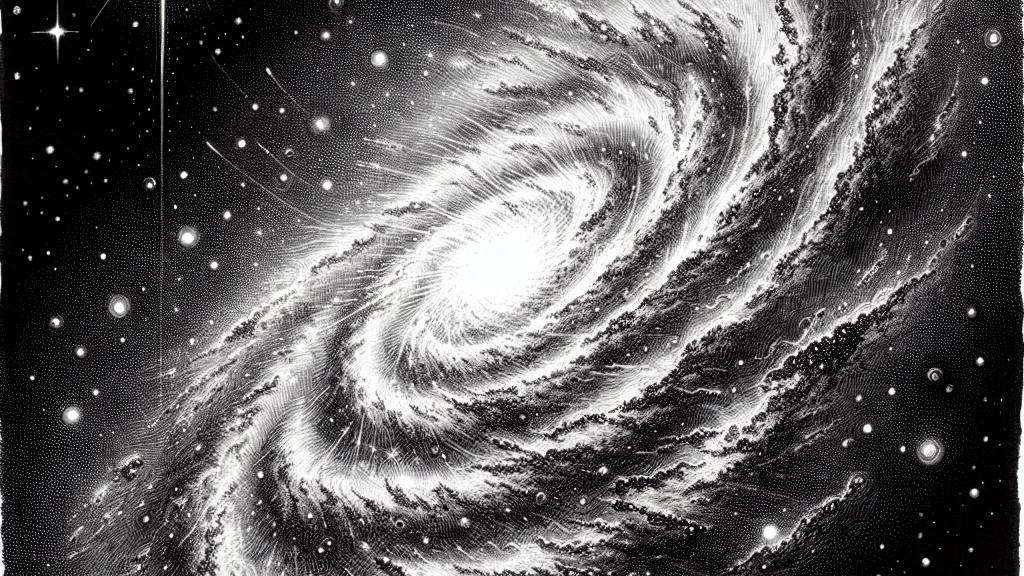Exploring the Inner Structure of a Giant Spiral Galaxy
Overview
- Astronomers harness the powers of JWST and ALMA to unveil the spectacular galaxy ADF22.A1.
- This stunning galaxy is not just a dusty star-forming giant, but a treasure trove of cosmic secrets waiting to be uncovered.
- Recent discoveries highlight a rapid rotation and a vibrant star formation process that defines its striking disk.

Introduction to ADF22.A1
Nestled in the heart of a proto-cluster called SSA22, ADF22.A1 emerges as a breathtaking barred spiral galaxy, capturing the attention of astronomers everywhere. With a remarkable redshift of 3.09, this galaxy provides a precious glimpse into the early universe, almost like peeking through a cosmic window into time. By utilizing formidable instruments such as the James Webb Space Telescope (JWST) and the Atacama Large Millimeter/submillimeter Array (ALMA), scientists are beginning to unravel the intricate details of its structure. Prior observations characterized it as a dusty star-forming galaxy, concealing a dazzling yet heavily obscured active galactic nucleus (AGN). Now, with renewed vigor, astronomers are eager to unlock the myriad mysteries woven into the fabric of ADF22.A1, revealing its essential place in cosmic evolution.
Observations and Discoveries
Recent findings regarding ADF22.A1 have illuminated its cosmic architecture with incredible clarity, igniting excitement among researchers. This galaxy boasts an effective radius of around 22,800 light years, placing it in direct comparison with our Milky Way, yet hinting at a rapid growth story within the bustling waters of its proto-cluster. Among the most exciting outcomes is the identification of a compact dusty core, indicative of a vigorous growth phase occurring in a proto-bulge. Additionally, the extensive disk of the galaxy reveals widespread active star formation, not just confined to selected areas but pulsing with life throughout. Notably, the analysis of ionized carbon emissions has uncovered a staggering rotation velocity of approximately 530 km/s—this extraordinary speed challenges preconceived notions about galaxy dynamics and firmly positions ADF22.A1 as an iconic fast-rotating giant, captivating both astronomers and the general public alike.
Implications of the Findings
The implications of these discoveries reverberate throughout our understanding of galactic evolution, prompting critical reflections on the forces shaping the universe. The revelation of such rapid rotation not only excites curiosity but also raises intriguing questions about the mechanisms behind these processes. Researchers hypothesize that factors like cold accretion and galactic mergers could serve as key drivers for this remarkable speed, all occurring within just two billion years of the Big Bang—a blink of an eye in cosmic terms. Such findings enrich our awareness of the intricate relationships between massive galaxies and supermassive black holes, revealing a symbiotic dance of co-evolution that is fundamental to understanding the universe's structure. As astronomers continue to exploit the full potential of JWST and ALMA, they stand on the edge of monumental discoveries, where each new insight enriches our ever-expanding cosmic narrative and ignites the flame of exploration in our hearts.

Loading...